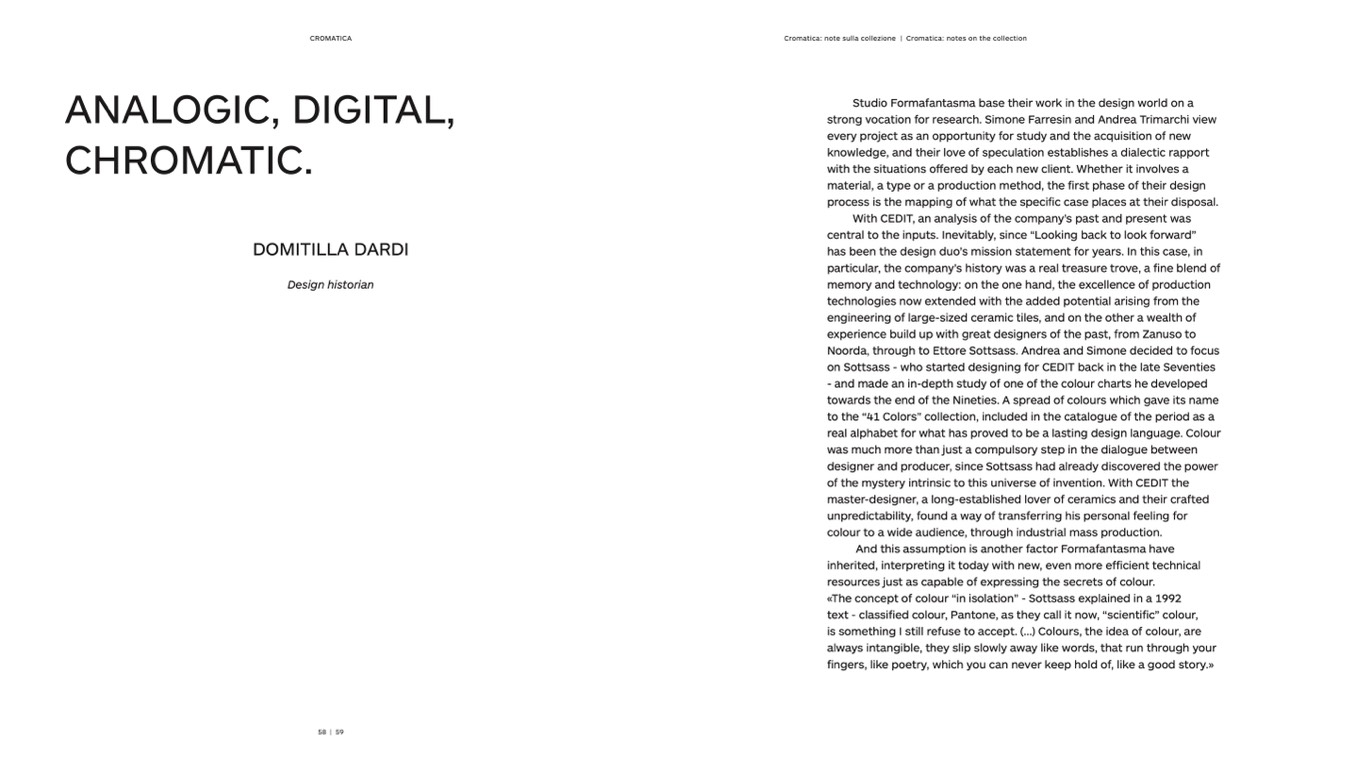
ANALOGIC, DIGITAL,
CHROMATIC.
DOMITILLA DARDI
Design historian
Studio Formafantasma base their work in the design world on a
strong vocation for research. Simone Farresin and Andrea Trimarchi view
every project as an opportunity for study and the acquisition of new
knowledge, and their love of speculation establishes a dialectic rapport
with the situations offered by each new client. Whether it involves a
material, a type or a production method, the first phase of their design
process is the mapping of what the specific case places at their disposal.
With CEDIT, an analysis of the company’s past and present was
central to the inputs. Inevitably, since “Looking back to look forward”
has been the design duo’s mission statement for years. In this case, in
particular, the company’s history was a real treasure trove, a fine blend of
memory and technology: on the one hand, the excellence of production
technologies now extended with the added potential arising from the
engineering of large-sized ceramic tiles, and on the other a wealth of
experience build up with great designers of the past, from Zanuso to
Noorda, through to Ettore Sottsass. Andrea and Simone decided to focus
on Sottsass - who started designing for CEDIT back in the late Seventies
- and made an in-depth study of one of the colour charts he developed
towards the end of the Nineties. A spread of colours which gave its name
to the “41 Colors” collection, included in the catalogue of the period as a
real alphabet for what has proved to be a lasting design language. Colour
was much more than just a compulsory step in the dialogue between
designer and producer, since Sottsass had already discovered the power
of the mystery intrinsic to this universe of invention. With CEDIT the
master-designer, a long-established lover of ceramics and their crafted
unpredictability, found a way of transferring his personal feeling for
colour to a wide audience, through industrial mass production.
And this assumption is another factor Formafantasma have
inherited, interpreting it today with new, even more efficient technical
resources just as capable of expressing the secrets of colour.
«The concept of colour “in isolation” - Sottsass explained in a 1992
text - classified colour, Pantone, as they call it now, “scientific” colour,
is something I still refuse to accept. (...) Colours, the idea of colour, are
always intangible, they slip slowly away like words, that run through your
fingers, like poetry, which you can never keep hold of, like a good story.»
CROMATICA
Cromatica: note sulla collezione | Cromatica: notes on the collection
58 | 59

